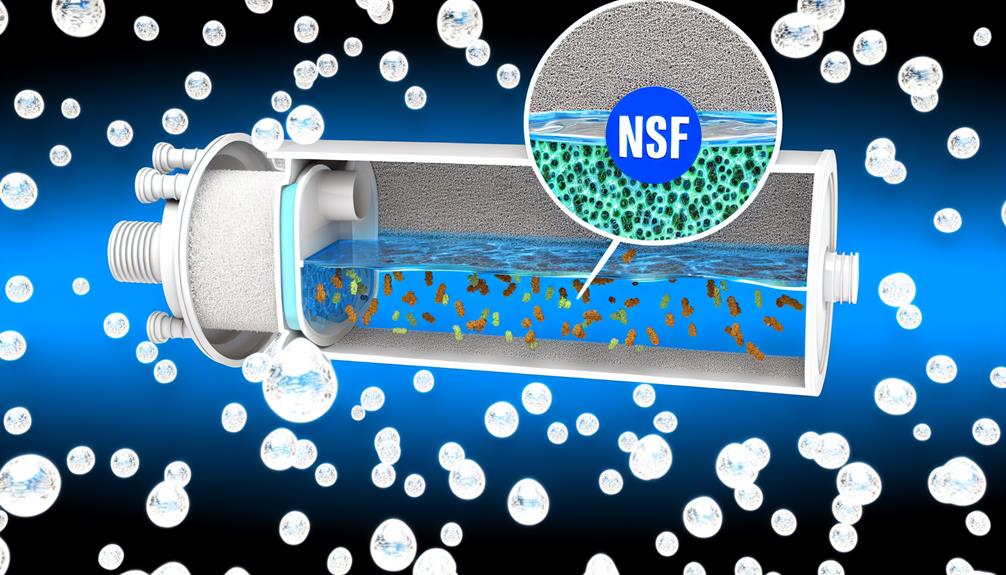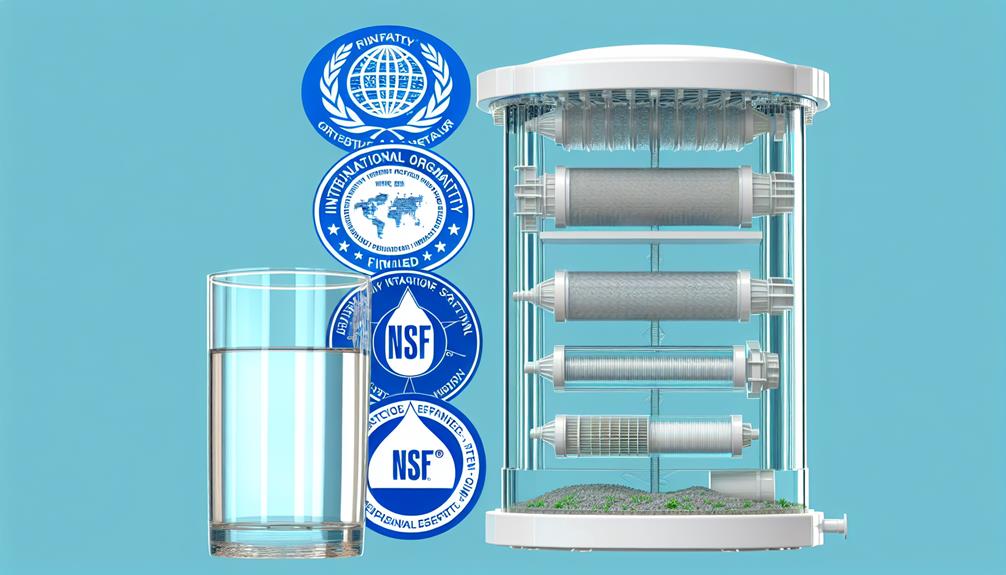When Flint, Michigan, made headlines for its water crisis, where lead contamination posed a dire health threat, you might've questioned the safety of your own tap water. You're not alone in your concern; lead is a toxic metal that, even at low levels, can have serious consequences, especially for children.
Certified filters offer a line of defense, with organizations like NSF International setting the bar for what qualifies as effective lead removal. As you consider the safety of your drinking water, it's important to understand the ins and outs of these certifications.
What exactly does it mean when a filter is 'certified' for lead removal, and how can you be sure it's doing the job it claims to? Let's explore the key factors that determine a filter's efficacy and what you should look out for to ensure your water remains safe to drink, leaving you equipped to make an informed decision about the water you and your family consume every day.
Understanding Lead Contamination
To mitigate the health risks associated with lead exposure, it's crucial to comprehend how lead infiltrates water systems and the implications of its presence. Lead contamination primarily occurs when water passes through old plumbing systems, including lead pipes and lead service lines. Even at low exposure levels, lead can cause significant health problems, such as developmental delays and learning difficulties. Notably, lead in drinking water is tasteless and odorless, eluding detection without specialized testing.
The Environmental Protection Agency (EPA) has established an action level for lead levels in drinking water at 15 parts per billion (ppb). However, no amount of lead is considered safe, particularly for children. To remove lead effectively, you must utilize filtration systems specifically designed for this purpose. Activated carbon filters, certified by NSF International, are adept at removing various contaminants including lead. Look for filters that boast a 99% reduction in lead content.
To maintain protection, you must regularly test the filtered water for lead levels and replace filters upon reaching their maximum capacity. This ensures that the filters continue to operate efficiently and effectively in removing lead from your drinking water.
Water Filter Certification Standards
Understanding the importance of water filter certification standards, such as those set by NSF International, is essential to ensure your filter meets stringent quality and performance criteria for lead removal. When you're in the market for a filtration system, it's critical to look for products certified to meet Standard 53 for lead removal.
This certification, provided by the National Sanitation Foundation (NSF) or the Water Quality Association (WQA), indicates a filter's capability to significantly reduce lead levels.
Certified filters have undergone rigorous testing to validate their effectiveness. Whether your chosen solution activates carbon or utilizes reverse osmosis technology, certification assures you that the filter is verified to remove lead as claimed.
This is particularly vital given the 'Millions of Lead' particles that can contaminate water supplies.
NSF/ANSI Certification Explained
When selecting a water filter for lead removal, it's imperative that you opt for one that boasts NSF/ANSI Standard 53 certification to ensure compliance with stringent lead reduction requirements. This certification is a testament to the filtration system's capability for certified lead removal, specifically attesting that the system can reduce lead in water to 10 ppb or less.
NSF/ANSI certification isn't just a label; it's a promise of safety and efficacy. To obtain this certification, water filters undergo rigorous tests to confirm their performance. Here are a few critical facts you need to know:
- Peace of Mind: Knowing your filter cartridge meets the gold standard for removing lead, you'll rest easier.
- Health Assurance: With NSF/ANSI certified carbon filters, you're taking a definitive step to protect your family from the dangers of lead.
- Investment in Quality: Opting for activated carbon water filters with this certification means you're investing in a scientifically validated method to reduce lead exposure.
Key Features of Certified Filters
Certified filters, crucial for lead removal in water, possess specific features designed to meet stringent safety standards. When you're selecting a water filter, ensure that it's certified by independent organizations, such as NSF International. This certification guarantees that the filtration system effectively targets contaminants like lead.
Your chosen filtration system likely utilizes a carbon block technology, which is adept at removing lead from your water supply. The carbon block acts as a porous medium that adsorbs the lead particles, significantly reducing their presence in the water you use. It's not just about lead; consider other potential contaminants and verify that your filter system is rated to address them.
Maintaining Filter Compliance
To ensure your filter remains compliant with safety standards for lead removal, you'll need to adhere to a strict maintenance schedule. Regularly verifying the efficacy of your water filter is pivotal to maintaining filtration performance, particularly when it comes to lead, which is a potent neurotoxin. To remove high levels of lead effectively, the filter must operate within its specified capacity, and this involves monitoring for the maximum contaminant level.
Consider these critical actions to maintain your filter's compliance:
- Monitor Filtered Water Quality: Periodically test the filtered water to detect any presence of lead, ensuring your filter continues to perform as expected.
- Follow Replacement Guidelines: Adhere to the manufacturer's guidelines for replacing the filter. Delaying this crucial step could result in diminished filtration efficacy.
- Inspect Water Pipes: Regularly check for any corrosion or degradation in water pipes, which could contribute to lead contamination.

